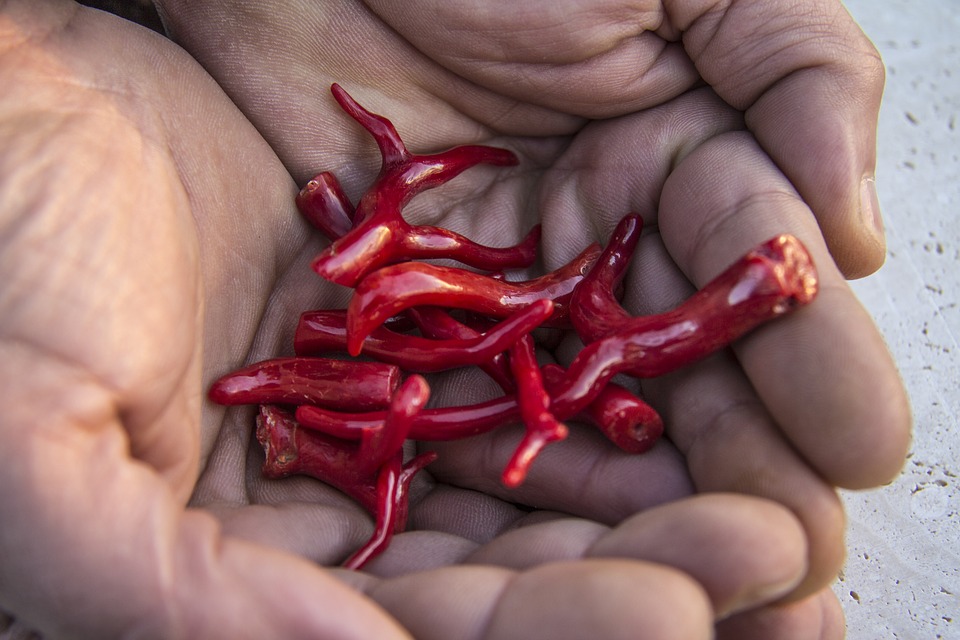Sardinia is now associated with all things luxury thanks to the opulence of Costa Smeralda and anyone enjoying a holiday in Sardinia will notice an innate richness to the island. However, it has a long history of exporting some of the most indulgent products through history and up to the present day. As an island, its history has resulted in unique and much-prized products, some of which are well known today, while others have sunk into legend.
Let us take you through some of Sardinia’s rarest and most beautiful products.
Saffron – Zafferano
Saffron is associated with a couple of places, and while Kashmir and Morocco handle their own supply of the spice, Sardinia grows 60% of Italy’s Saffron. Thanks to the African influence on the island it features in many dishes.
Saffron is known as the most expensive spice in the world and has been coined as ‘red gold’, however, Italian saffron is of the highest quality and therefore commands a higher price. Though expensive the spice is also more potent, meaning less of the precious strands have to be used in cooking.
The village of San Gavino Monreale is famous for its annual Saffron Festival that celebrates this historical crop and many holidaymakers visit the town. Zafferano Sargidda told us about saffron production in the area:
“In Sardinia, saffron has a four-year cycle. We plant it in September after a good tillage of the soil, then, if the weather allows it, we will hoe it several times, manually on the row and with the help of a rotary tiller between the rows.
“At the 4th year, at the beginning of summer, we dig up the corms, remove the thin tunics that cover them and replant them in another plot of land. In fact, the saffron crop impoverishes the soil, so where saffron was grown we alternate other improving crops such as leguminoses.”
“Saffron blooms in November. Every morning we pick the flowers by hand and in the evening sort out the threads (three per flower) and do “sa feidadura”: it consists of touching saffron with the fingers just dipped in olive oil to give it more brightness and to preserve it better. Finally, we dry it at a temperature below 40 degrees. We work hard to get the final product, and this is the reason of its big value and its epithet: “red gold”.”
Sea silk

Described as the rarest textile on the planet, it is safe to say that sea silk is most certainly a luxury item. Also known as Byssum, it has an extensive history within Sardinia as well as among the great and good of Europe. Sea silk is both incredibly fine as well as being super light and is made of the beard of the pen shell, particularly Pinna Nobilis.
The Noble Pen Shell is endemic to the Mediterranean and can be found as deep as 60m. Unfortunately, it has also become threatened with extinction. This is partly due to fishing, trawling and anchoring but also due to pollution. The decrease of the mollusc coupled with the reduced interest in sea silk means this ancient art is in danger of being lost.
With a history dating back nearly 2,000 years, it is only really on the small island of Sant’Antioco that the tradition of weaving sea silk still exists. The precious fabric has recently seen international attention thanks to Chiara Vigo who claims to be the last silk seamstress. The Project Sea Silk has been set up by the Natural History Museum in Basel with the hope of gaining as much information as possible on this ancient art. Thus far they have collected over 60 pieces of Sea Silk.
Red Coral

Precious coral has been revered and used for decoration as early as the first millennium and the red coral (Corallium Rubrum) has found an enormous market to the East. The hard exoskeleton of a coral is matte but can be cut and polished to a high shine.
The underwater caves of Alghero are known as the Coral Riviera and while the southerners refer to Saffron as their red gold, those from Alghero speak as lovingly of their coral. Though over-harvesting has seen past devastation in red coral across the globe, new and stringent rules are in place to protect this precious asset.
Initially, red coral was thought to be a protective charm and the unpolished branches would be hung around children’s necks as a charm. It was also thought to have medical properties including healing snake bites. The red colour of the gem was popular in other cultures and soon trade was established and as the centre of Sardinian coral, Alghero has a small museum dedicated to the substance.
Unfortunately coral is very slow growing and it is taking the coral beds sometime to replenish. If you choose to take home a souvenir of red coral from your trip to Sardinia, ensure it is both high quality and harvested properly
Filigree Jewellery

Another craft that is still widely available today, Sardinia is known for its delicately handmade jewellery. Credited to be over 4,000 years old, Sardinian jewellery has changed a lot from its first inception, primarily a mix of copper, now it is often worked in fine silver and gold.
Displayed as ornamental buttons on the traditional costumes of Sardinia, this jewellery is part of their heritage as much as their future. The Secret Life of Jewellery blog was thrilled to witness the celebration that honours Sant Efisio for this reason:
“No traditional costume can be complete without accessories so it’s the perfect occasion to wear the beautiful handmade gold and silver filigree jewellery that Sardinia is famous for. These pieces are usually inherited or ordered specifically by well-skilled goldsmiths. For me, it was the perfect occasion to get a close look at these inspirational pieces and single out the details of a colourful parade.”
You can watch artisans create their intricate masterpieces in workshop windows and doorways in small towns scattered across the island. However if you cannot wait until your next trip to Sardinia, the popularity of the delicate adornment has spread to the UK.
Kokku is a company that maintains the beauty of Sardinian design while also practising ethical values and sharing this beauty outside of the island. For something stunning and unusual see their online collection.
Image Credit: Hectonichus, Max Pixel, Shardan,






